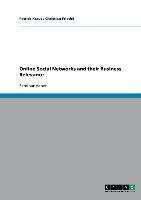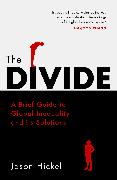Online Social Networks and their Business Relevance
BücherAngebote / Angebote:
Seminar paper from the year 2009 in the subject Information Management, grade: 1, 7, Pforzheim University, course: Informationmanagement, language: English, abstract: In the past decades a coming-together of the technological networks that connect computers on the Internet and the social networks that have linked humans took place. Sites like Facebook, LinkedIn, MySpace, Wikipedia or YouTube have led to changes in our styles of communication. A growing pattern of movement through online spaces to form connections with others, build virtual communities, and engage self-expression can be observed (Kleinberg (2008), p. 66).
Basic structure of so called Online Social Networks (OSN) consists of individuals who are linked to the others in the same network. The aims which users persecute by joining OSN are as multifaceted as the number of different OSN-websites. LinkedIn, for example, helps people building professional connections, Friendster however aims to help people building personal relationships for making friends etc. Also eBay, probably the world's largest online auction site, might be the largest OSN (Chau / Pandit / Wang / Faloutsos (2007), p. 1283).
Impressive is particularly that in recent years social networking has moved from niche phenomenon to mass adoption, with enormous growth rates. It was not unusual for successful social networking sites to experience periods of viral growth with participation expanding at rates topping 20 percent a month (Gross / Acquisti (2005), unpaged). So OSN are now among the most visited sites on the Web (Mislove / Koppula / Gummadi / Druschel / Bhattacharjee (2008), unpaged).
The main purpose of this paper is to give an overview on OSN and point out a prospective relevance for business aspects. Therefore, we give a brief definition of OSN and present necessary basics in chapter two. Chapter three focuses on the business relevance of OSN. The fourth chapter demonstrates possible benefits and threats by using OSN. The paper ends with a final conclusion in Chapter five.
Folgt in ca. 5 Arbeitstagen




